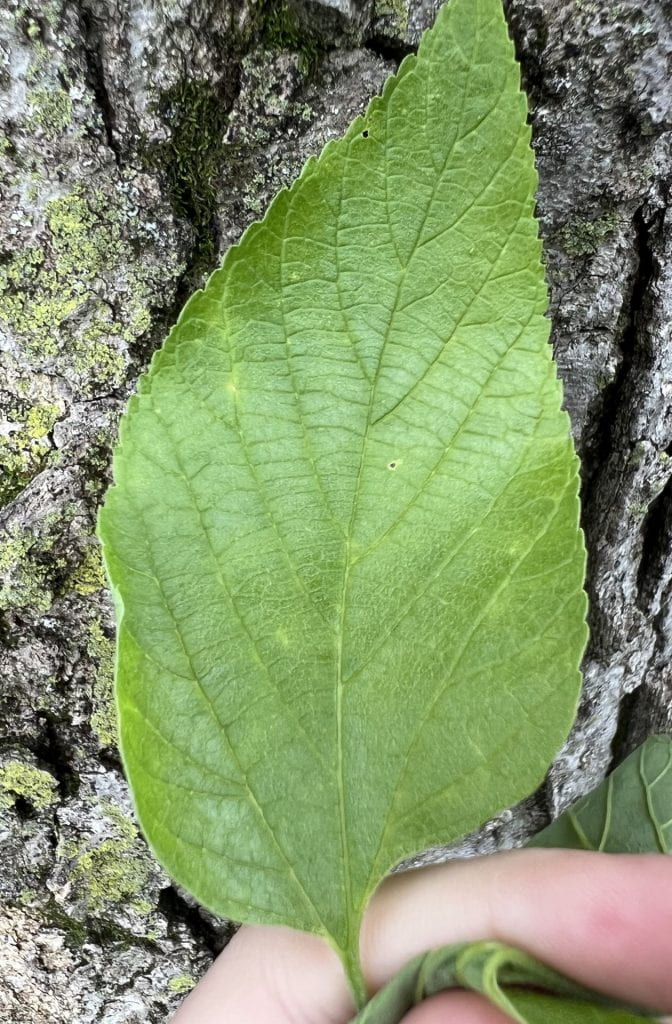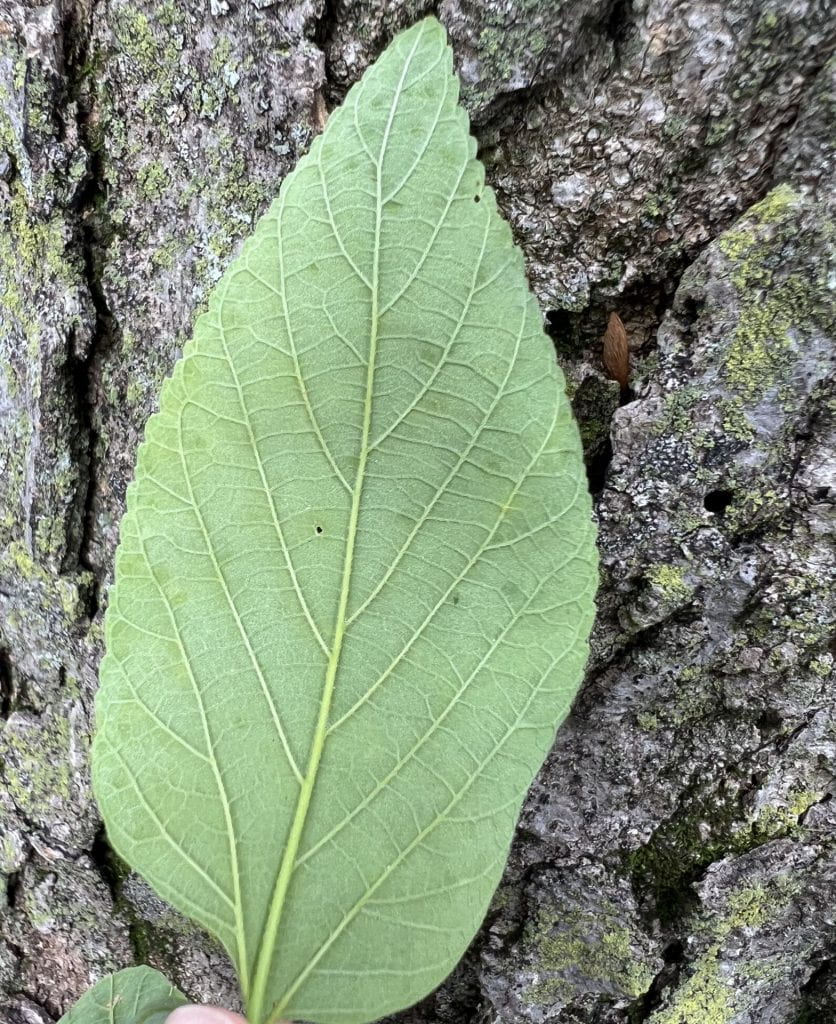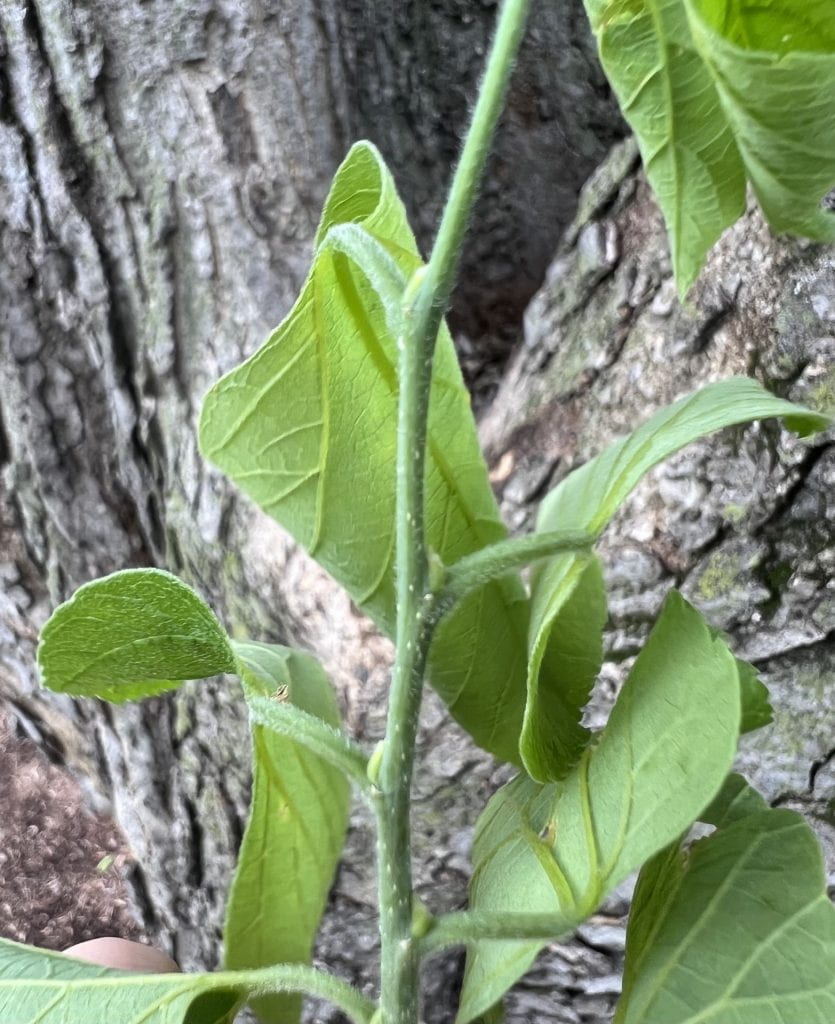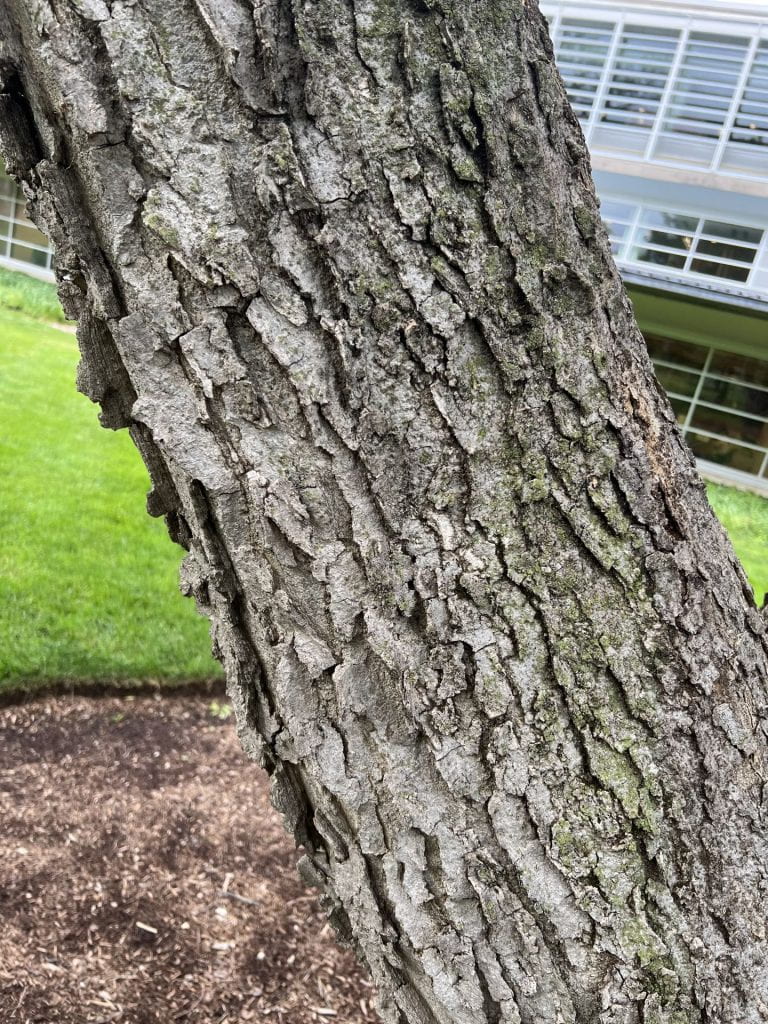Sugarberry
Arbor Walk #29, Treekeeper ID #1658
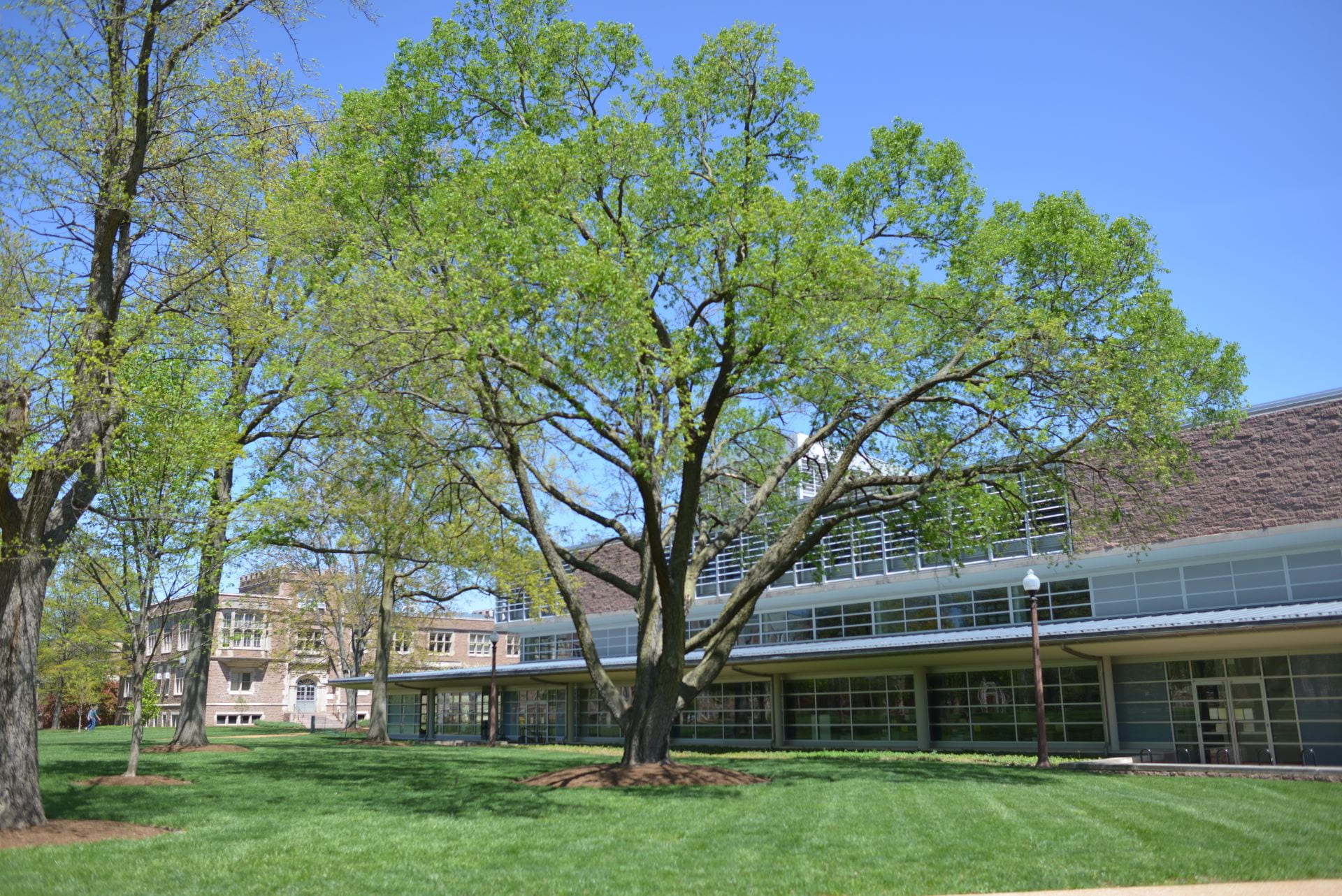
This lovely mature tree has shaded the west side of Olin Library for generations of students, but sadly came down in a storm in July 2023. There is a new Sugarberry in the collection, Arbor Walk #154. Sugarberry is a native tree that performs well in urban conditions and is easily distinguished by its distinctive corky bark. But be careful, because there are other relatives that are native to Missouri that have very similar bark such as the Common Hackberry.
The fruit produced by this species are often quite sweet (said to be sweeter than its relatives), which is what has earned the tree its common name. Ripening occurs in the fall, and the fruit is edible to both humans and local wildlife. It is more resilient to common diseases, but less able to manage highly frigid winters than its northern relative.
More information on the Sugarberries in our Arboretum here!

GPS Coordinates
N/A
Percent Concrete
N/A
Distance to Buildings
| Year | Close Building #1 | Close Building #2 | Close Building #3 |
|---|---|---|---|
| 2020 | Olin Library, 13.48 m | Graham Chapel, 41.46 m | Women’s Building, 77.24 m |
Distance to Other Species
| Year | Close Species #1 | Close Species # 2 | Close Species # 3 |
|---|---|---|---|
| 2020 | Hybrid Elm, 10.38 m | Blackgum, 12.35 m | Eastern Redbud, 16.28 m |
Standard Measurements
| Year | Height (m) | DBH (cm) | Crown Diameter N-S (m) | Crown Diameter E-W (m) | Average Crown Diameter (m) |
|---|---|---|---|---|---|
| 2020 | 19.44 | 66.56 | 20.98 | 20.99 | 20.985 |
| 2023 | 22.2 | 92 | 19.2 | 21.6 | 20.4 |
Nests and Pests
| Year | Description |
|---|---|
| 2020 | Heart rot on trunk (3 large growths) 2 large pieces of white fungus which may be remnants of the same heart rot A diseased area of exposed wood that has dark bacterial growth and extensive lichen and algae Thick moss, algae, and grey+green lichen on the trunk base Clusters of Witches’ Broom Potential webworm/tentworm |
eaf Identification
The leaves of the Sugarberry are ovate shaped, and the venation is pinnate. They can have entire margins or be serrated on the upper half of the leaf. Typically about 2″ to 5″ long, the leaves have an acuminate tip and an uneven base. They can be slightly pubescent, but are mostly smooth. They are usually a light green color but turn yellow in the fall. The leaves are alternately arranged on the stem.
Twig and Bud Identification
The twig of the Sugarberry is typically zig zag, reddish-brown, and have lighter lenticels (pores). The buds tend to be appressed, triangular, and tan. It lacks a true terminal bud, but it does have a pseudoterminal bud. The pith is chambered at the nodes.
Bark Identification
The Sugarberry has distinctive corky bark. The corks are usually spread out and are ringed protrusions. The bark is light brown-gray in color.
Fruit Identification
The fruit of the Sugarberry are round drupes that each contain one seed. It is green, then orangish-red, and finally dark purple at maturity. They are edible. The fruits ripen in the fall.
Flower Identification
The Sugarberry’s flowers are very small, usually only about 1/8″ long. They are light green and are produced on stalks at the leaf axils. They can produce perfect (male and female in the same flower) flowers, but if not, male flowers are in clusters while female flowers are solitary. The flowers bloom throughout the summer.


